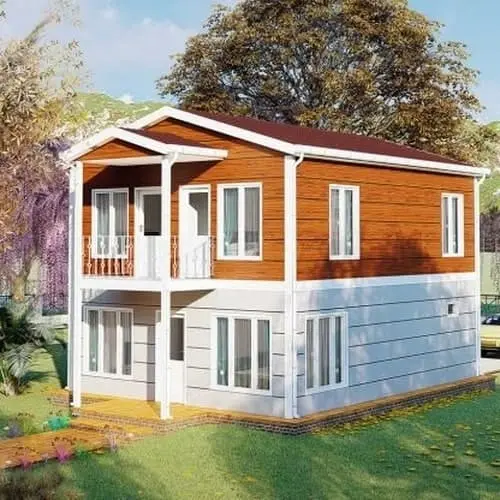
Prefabricated concrete villas are a modern and innovative approach to residential construction that offer numerous advantages in terms of speed, efficiency, sustainability, and design flexibility. These villas are built using precast concrete components that are manufactured off-site in a controlled factory environment and then transported to the construction site for assembly. The use of prefabricated concrete components allows for faster construction timelines, reduced labor costs, and improved quality control compared to traditional on-site construction methods.
Design and Customization
Modern prefabricated concrete villas offer a high level of design flexibility and customization options. The precast concrete components can be manufactured in a wide range of shapes, sizes, and finishes to suit the specific design requirements of the villa. This allows for creative and unique designs that can be tailored to the preferences of the homeowner. The use of prefabricated components also allows for easy integration of various architectural styles, finishes, and building systems, such as HVAC, electrical, and plumbing, into the villa design.
Speed and Efficiency
One of the main advantages of prefabricated concrete villas is their accelerated construction timeline. Since the precast components are manufactured off-site in a controlled factory environment, construction can proceed concurrently at the site, reducing the overall construction time. The assembly of the precast components at the construction site is typically faster than traditional on-site construction methods, as the components are pre-engineered and designed for easy and quick installation. This can result in significant time savings compared to traditional construction, allowing homeowners to move into their new villa sooner.
Quality Control
Prefabricated concrete villas are manufactured in a controlled factory environment, allowing for strict quality control measures. The precast components are produced using standardized processes and materials, ensuring consistency and uniformity in the quality of the finished product. The use of precast concrete also eliminates many of the variables and risks associated with on-site construction, such as weather-related delays, poor workmanship, and material waste. This results in a higher level of quality assurance and reduces the risk of construction defects and issues in the finished villa.
Sustainability
Prefabricated concrete villas are also considered to be a sustainable construction option. Concrete is a durable and long-lasting material that can withstand harsh weather conditions and requires minimal maintenance. The use of precast concrete components also minimizes construction waste, as the components are manufactured to precise measurements and can be reused or recycled at the end of their service life. Additionally, the energy-efficient properties of concrete, such as its thermal mass and insulation capabilities, can contribute to reduced energy consumption in the villa, resulting in lower operational costs and a smaller environmental footprint.
Durability and Resilience
Concrete is a highly durable and resilient material that can withstand the test of time. Prefabricated concrete villas are designed and built to meet or exceed local building codes and regulations, ensuring a safe and sturdy structure. Concrete is also resistant to fire, rot, termites, and other pests, making it a reliable choice for long-term durability and maintenance-free living. Additionally, precast concrete components can be engineered to withstand extreme weather conditions, such as hurricanes, earthquakes, and floods, providing increased resilience and safety for the occupants of the villa.
Cost Efficiency
Prefabricated concrete villas can also offer cost savings compared to traditional on-site construction methods. The streamlined and efficient manufacturing processes used in the production of precast concrete components can result in lower material costs, reduced labor costs, and improved construction timelines. The controlled factory environment also minimizes the risk of material waste and rework, further reducing costs. Additionally, the durability and low-maintenance properties of concrete can result in long-term cost savings in terms of repairs, maintenance, and operational costs.
Conclusion
Modern prefabricated concrete villas are a sustainable, efficient, and cost-effective approach to residential construction.